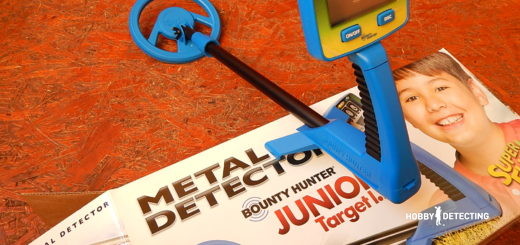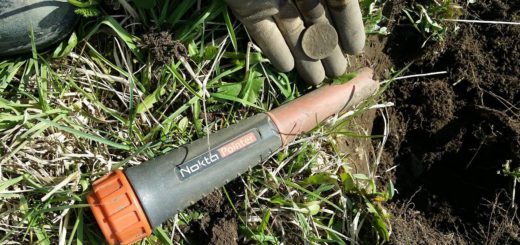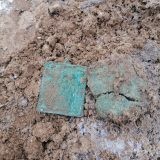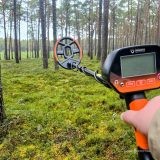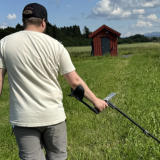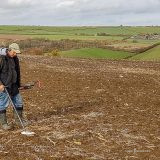What Shovel Shoud You Use For Metal Detecting? Lesche T-Handle vs. Fiskars All-Steel Shovel (Review, Comparison, Thoughts+)
The selection of the correct digging tools is crucial for any metal-detecting enthusiast. Walking around and digging with a bad shovel isn’t very fun, as we all probably have experienced. In this review we’ll look at two shovels that are popular among diggers, and that I personally have used: the Lesche T-Handle Shovel and the Fiskars All-Steel Digging Shovel. I’ll take you through the design, functionality, durability, and overall practicality and effectiveness of these tools.
Lesche T-Handle Shovel
The Lesche T-Handle Shovel is characterized by its compact and robust design. The T-handle provides a comfortable grip, allowing for precise control and maneuverability while digging for your targets. The blade’s shape, with its pointed tip and serrated edges, cuts through most soils and even some roots.
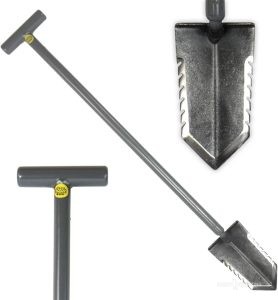
Ideal for precision digging, the Lesche T-Handle is especially good if you are worried about causing unnecessary damage to the surrounding soil. The pointed tip and sharp blade aid in creating clean and defined edges.
Constructed with aircraft-quality steel, the Lesche T-Handle Shovel shows remarkable durability, and I can personally vouch for that durability. The heat-treated blade ensures resistance against wear and tear, making it a reliable companion for hardcore use in diverse soil conditions.
I have personally had this shovel (the short version) for most of my metal-detecting adventures, and I must say that I love it. It feels robust and can be used in most soils, even in quite rocky ones. It is sharp and precise and makes clean cuts when digging through the grass while making minimal damage. I have used this shovel in so many difficult situations, and it has never broken down on me and still feels as solid as when I bought it. It is very practical to carry around, and the short version even fits in my backpack.
Now of course nothing is perfect, and even the Lesche shovel has its drawbacks. Firstly, I noticed that after not using it for some weeks it started to rust. It has to be regularly and thoroughly cleaned after use. It is also rusting from the inside of the hollow handle, and this will eventually weaken its structural integrity, but I have to this day not seen anyone who has broken such a shovel. The shovel blade is also not the biggest, so you might end up having to spend some time digging if the target is deep or big.
Fiskars All-Steel Digging Shovel
The Fiskars All-Steel Digging Shovel has a very nice design, with a long, straight shaft and a D-handle for better leverage. The flat, squared-off blade is designed for efficient soil removal, making it well-suited for larger and deeper excavations.
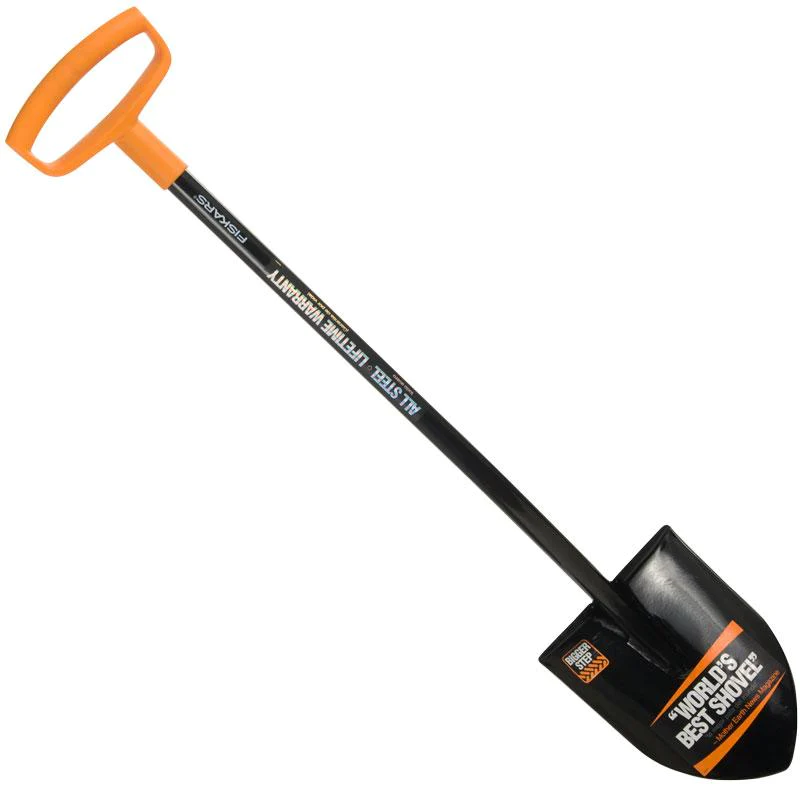
The Fiskars shovel will efficiently assist you in digging out large areas. The sharp blade easily cuts through roots, while the foot platform provides additional force for penetrating harder soils. Crafted from high-quality, all-steel construction, the Fiskars shovel can be applied for heavy-duty use. The blade’s powder-coated finish adds an extra layer of protection against corrosion.
Now this shovel also has its drawbacks, and compared to the Lesche shovel I would say that the two biggest disadvantages are its size and lesser durability. At some point in such shovel’s lives, they will probably break, either it being at the shaft or the blade, and this can be incredibly frustrating.
Comparison
The Lesche T-Handle Shovel, with its pointed tip and serrated edges, is good for precision digging, making it an amazing tool for uncovering small artifacts. In contrast, the Fiskars All-Steel Digging Shovel leans towards versatility, offering a larger blade with less precision. The Lesche T-Handle’s design provides better control, while the Fiskars shovel with its long shaft and D-handle offers excellent leverage for efficient digging over larger expanses. While the Lesche T-Handle minimizes soil disturbance, making it an excellent choice for grass lawns, the Fiskars shovel with its broader blade may cause more mess, making it better for field digging. Both shovels are quite robust, but the Lesche shovel takes the win here, as it seems almost unbreakable. The Lesche shovel also has the advantage of being more practical to transport/carry around and it is slightly lighter in terms of weight, and for some detectorists this is a deciding factor. The choice between the two depends on your preferences in digging style and detecting environment.
However, nothing is stopping you from owning both shovels like I do, and I can highly recommend them both. Want to read more about digging tools? Stay tuned! In the next digging tools review we will be comparing smaller digging tools to find out which ones are the best. Happy digging!
As usual, I’ll be very happy if you leave a comment below with your thoughts or wishes for future articles, and if there are any questions do not hesitate to fire away in the comment section!

